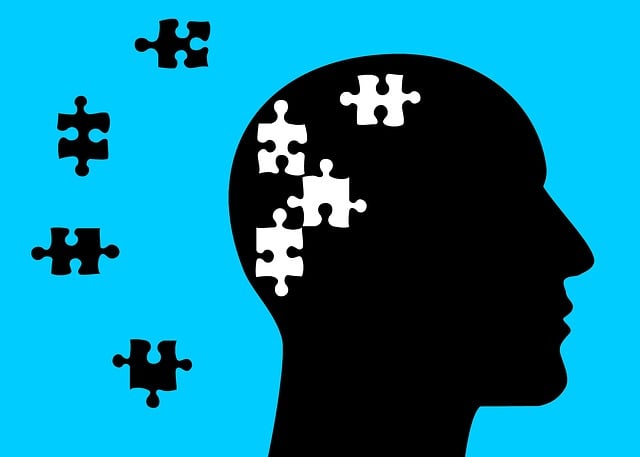Broomfield Gender Identity Therapy (BGIT) offers a holistic approach to mental wellness for LGBTQ+ individuals, focusing on physical, emotional, and social well-being. Through personalized self-care practices, BGIT equips participants with coping mechanisms and emotional regulation skills, empowering them to take charge of their mental health journeys. The program's effectiveness is assessed using both quantitative (surveys, questionnaires, statistical analysis) and qualitative (interviews, focus groups) methods, providing comprehensive insights. This mixed-methods strategy helps refine BGIT services, ensuring they address societal perceptions impacting self-esteem and offer tailored support for diverse populations navigating complex identities.
“Evaluating mental wellness programs is paramount in ensuring their efficacy and impact. This article explores diverse methods, inspired by the comprehensive framework of Broomfield Gender Identity Therapy, for assessing these initiatives. We delve into quantitative techniques, offering measurable insights, and qualitative approaches, revealing participants’ experiences. Furthermore, a mixed methods strategy is presented, combining both to provide a holistic evaluation. By integrating these methods, mental health professionals can gain valuable, multidimensional understanding of program performance.”
- Understanding Broomfield Gender Identity Therapy: A Framework for Evaluating Mental Wellness Programs
- Quantitative Assessment Techniques in Mental Health Program Evaluation
- Qualitative Methods: Uncovering Insights and Experiences within Wellness Initiatives
- Mixed Methods Approach: Integrating Quantitative and Qualitative Strategies for Comprehensive Program Evaluation
Understanding Broomfield Gender Identity Therapy: A Framework for Evaluating Mental Wellness Programs

Broomfield Gender Identity Therapy (BGIT) offers a unique and comprehensive framework for evaluating mental wellness programs, particularly those focusing on LGBTQ+ individuals. This therapeutic approach emphasizes the interconnectedness of physical, emotional, and social well-being, reflecting a holistic view of mental health. By integrating self-care practices tailored to individual needs, BGIT enables participants to develop effective coping mechanisms and enhance their emotional regulation abilities.
The program’s core principles revolve around empowering individuals to take control of their mental wellness journey. Through evidence-based techniques and mind over matter strategies, BGIT encourages clients to challenge negative thought patterns and cultivate a positive self-image. This evaluative framework can be adapted for various programs by assessing the impact of these practices on participants’ overall emotional well-being, self-acceptance, and ability to navigate life’s challenges with resilience and enhanced mental wellness.
Quantitative Assessment Techniques in Mental Health Program Evaluation

In evaluating mental wellness programs, Quantitative Assessment Techniques play a pivotal role in measuring their effectiveness. These methods involve the use of surveys, questionnaires, and statistical analysis to gather data that can be directly quantified and measured. For instance, assessing the impact of Broomfield Gender Identity Therapy (BGIT) might include pre-and post-program surveys gauging participants’ self-esteem improvement. By comparing these quantitative metrics, evaluators can determine if BGIT successfully reduces mental illness stigma or fosters a better understanding of mind over matter principles within the target population.
Furthermore, Quantitative Assessment Techniques allow for data-driven decision-making and program refinement. The collected data provides insights into which aspects of the program are most beneficial and where improvements may be needed. This is especially valuable in Mental Illness Stigma Reduction Efforts, as it enables the tailoring of programs to better address societal perceptions that often exacerbate self-esteem issues. Through these techniques, BGIT or similar initiatives can continually evolve, ensuring their relevance and effectiveness in enhancing mental wellness among participants.
Qualitative Methods: Uncovering Insights and Experiences within Wellness Initiatives

Qualitative methods offer a powerful lens for evaluating mental wellness programs, particularly when exploring the intricate experiences and insights shared by participants. These approaches, such as in-depth interviews and focus groups, allow individuals like those seeking support at Broomfield Gender Identity Therapy to narrate their journeys. Through open-ended conversations, therapists can uncover unique perspectives on various aspects of wellness initiatives, including stress management, anxiety relief, and trauma support services.
By delving into personal stories, researchers gain valuable insights into the effectiveness of these programs from the user’s perspective. This qualitative data not only highlights successful strategies but also uncovers unforeseen challenges, cultural considerations, and individual differences. It provides a nuanced understanding of how mental wellness interventions resonate with diverse populations, ensuring services are tailored to meet the specific needs of every client, including those navigating complex identities.
Mixed Methods Approach: Integrating Quantitative and Qualitative Strategies for Comprehensive Program Evaluation

The evaluation of mental wellness programs has evolved to include a diverse range of methodologies, and one such powerful approach is the Mixed Methods strategy. This method combines both quantitative and qualitative techniques to gain a comprehensive understanding of program effectiveness. By integrating surveys, statistical analyses, and in-depth interviews or focus groups, researchers can explore various aspects of a program’s impact. For instance, quantitative data might reveal statistically significant improvements in participant scores related to emotional regulation, while qualitative insights could shed light on individual experiences with mindfulness meditation techniques, as demonstrated by Broomfield Gender Identity Therapy programs.
Additionally, this mixed approach allows for the examination of complex relationships between variables. It can uncover hidden patterns and provide a richer picture of how public awareness campaigns development contributes to overall mental wellness outcomes. By combining these strategies, researchers can offer a nuanced evaluation, ensuring that program improvements are evidence-based and tailored to meet the diverse needs of participants.
In evaluating mental wellness programs, adopting a comprehensive approach that incorporates both quantitative and qualitative methods is essential. As demonstrated by Broomfield Gender Identity Therapy’s framework, understanding participants’ experiences and identities is crucial for effective program assessment. Quantitative techniques offer measurable data, while qualitative methods provide deeper insights into individual narratives and perceptions. By integrating these strategies, as illustrated by the mixed-methods approach, mental health professionals can gain a holistic view of program impact, ensuring initiatives are tailored to meet diverse needs and foster positive mental wellness outcomes.














